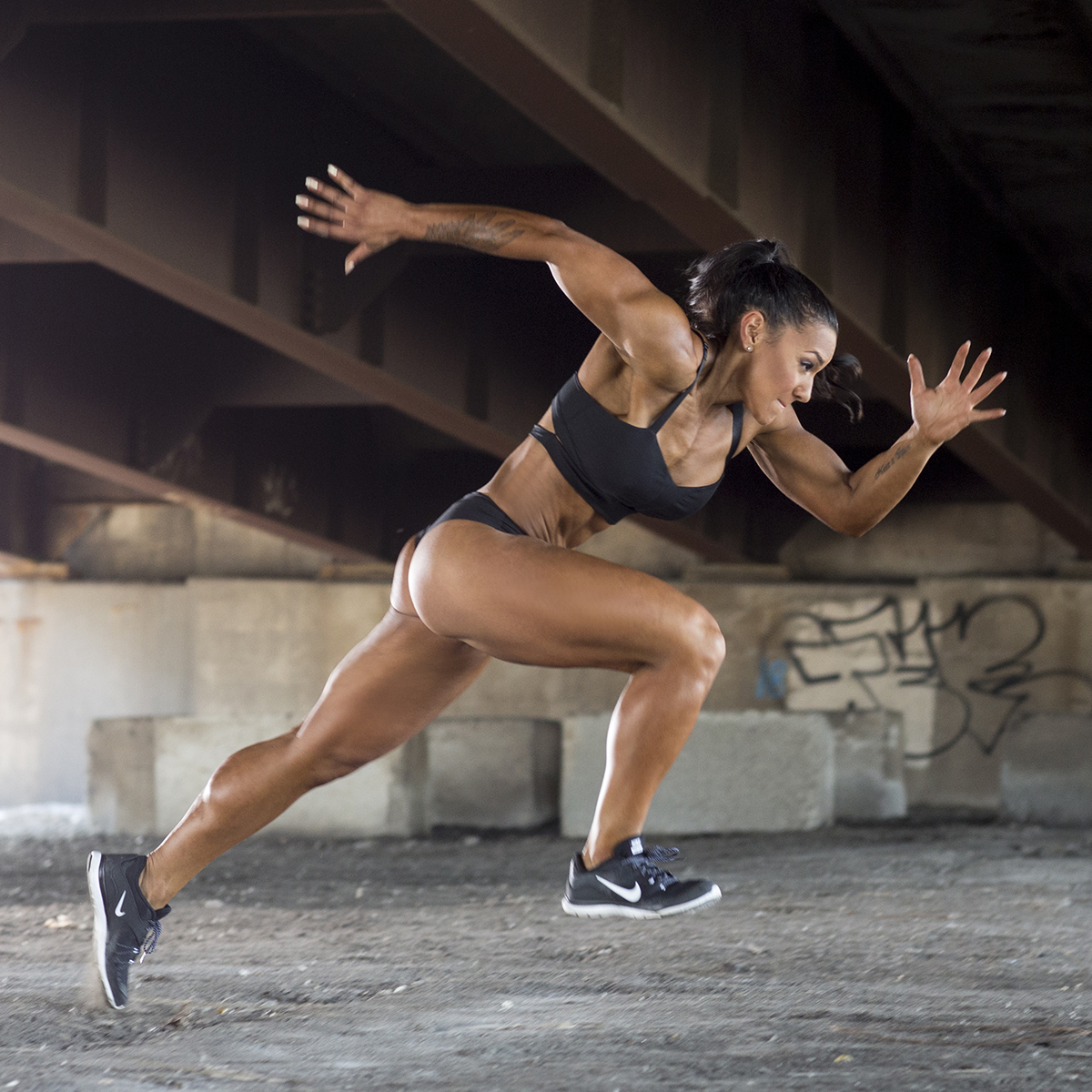Training Tip Tuesday – How to Pick a Running Shoe

Hi there! Coach Alicia here. You may or may not know that in addition to being a Kinesiologist, Prep Coach, Certified Personal trainer and a Fascial Stretch Therapist that I am also an elite Track and Field Coach. I have owned and operated my own Track and Field club, coached Team Canada at the World Maccabi Games and I am the current head coach of Ryerson University. I have accumulated many sprint and hurdle certifications and you could say I know a thing or two about how to choose the right running shoe.
Choosing the right running shoe is very important not just for a runner, but for many other types of athletes including: recreational sports, performance-based fitness and particularly for a fitness competitor. Why? Because when you increase your cardio, you are racking up the mileage on your shoes, wearing them down with every training session. Not only do you now have to replace your shoes more often (on average it should be replaced every 5-6 months), but if you are doing two-a-days with double cardio, this might need to be more often!
Now when it comes time to buy a new shoe we often go for the best-looking shoe (I have even been guilty of this), our favorite brand, our favorite color or even worse a shoe that may simply may be on sale. Firstly, like any other product you pay for quality. I advise you not to cheap out when it comes to your cardio kicks. Buying a cheap shoe for cardio is like fueling your body with over-processed fast food instead of premium, organic whole food. It simply doesn’t run as efficiently as it should.
Did you know that shoes come with motion control? What is motion control? Firstly, let me tell you about what overpronation is. It is a common trait that affects most runners, leaving them at risk of knee pain and injury. Overpronation can lead to foot fatigue or accidents when left untreated. This biomechanical issue is usually experienced by flat-footed runners. Having motion control shoes will likely help you improve your running economy and performance while facilitating a stable and cushioned ride. Motion control shoes have stiffer heels than support-focused shoes for better pronation control or correction. Motion control shoes have premium cushioning technologies that provide a firmer midsole for better support, but are less flexibility. They also have Teutonic support features which help ease the stress in the quadriceps while running. This is very important for people who are quad dominant.
Overpronator’s need stability or motion control shoes. So, go ahead and look at the bottom wear of your shoe to see which one you may be. If you have a regular wear (heel to toe off) you are a neutral runner. If you have the wear of an overpronator (worn more on the outside of the sole) you most likely will need a shoe with motion control.
How can you tell if a shoe has motion control? You will usually see a darker part on the inside sole of the shoe. This is usually grey in color. In some shoes the grey can be approximately an inch, in others a few inches, and some can be half of the shoe. This means the motion control is mild, medium or maximum. If you slightly pronate you need mild, if you pronate moderately you need medium and if you overpornate severely you need maximum motion control.
What brands come with motion control? I’m sorry to break the bad news but most of the popular shoes like Adidas, Nike, Puma and Converse are all neutral shoes. If you are a pronator you may be doing yourself more harm than good by putting your feet into a neutral shoe. Brooks, New Balance, Asics, Mizuno and Sketchers all have motion control shoes.
If you don’t feel confident enough to go to a store or buy motion control shoes online my best advice is to either go to a Running Room or a New Balance store. Why? Because all employees at these two stores should be trained to assess your running gait and give you options of motion control shoes that will work for you. They will get you to try the shoes on in the store so that you can get a feel for the different shoes and feel the difference in your gait with them on before purchasing them.
Make sure to choose the right size and fit of a shoe once you’ve decided on a shoe. To enhance running performance and avoid injuries pay attention to correct sizing and fit. Make sure to have a roomy toe box and consider that type of socks you intend to wear when you purchase a new pair of motion control running shoe. If you are wearing a thicker or thinner sock than usual it will change the fit of the shoe once you get into your regular socks.
Trust me when I say that choosing the right shoe will change your cardio by making you a more efficient runner, decrease your aches and pains from your ankles to your knees and even in your back. It will also boost your training so that you can get the maximum results for your effort! Thank me later and happy running!
